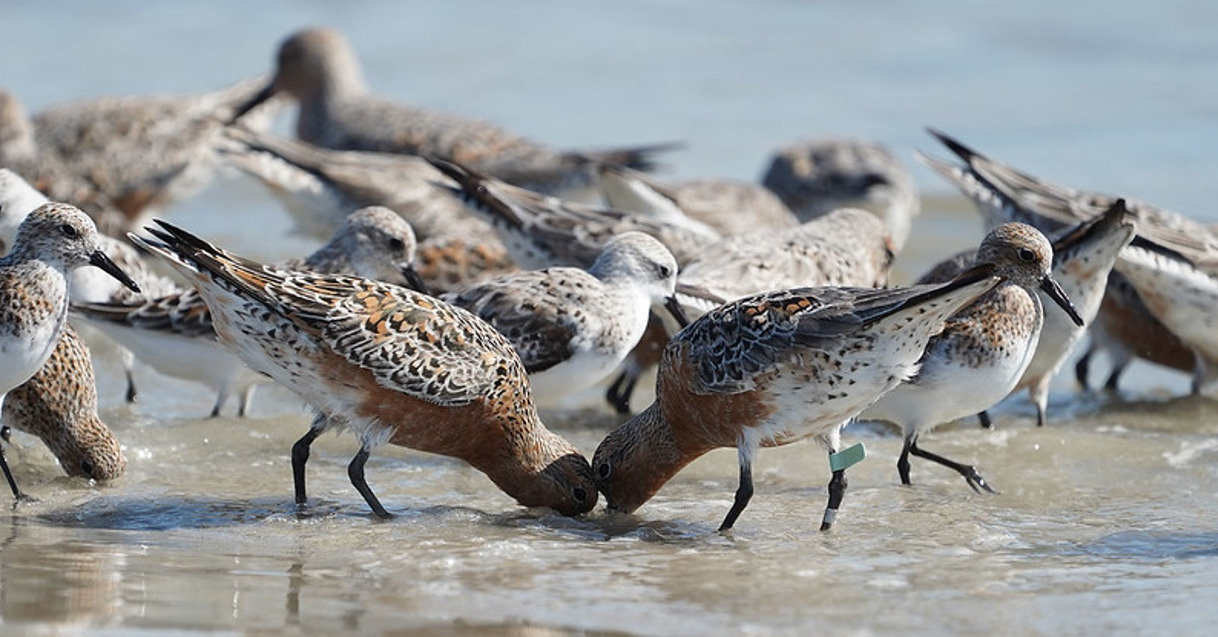A Red Knot, traveling on a journey from South America north up to the Arctic tundra to nest, has a narrow time frame when the tide is just right for the sand to be moist enough for its nutritious food resources to be accessible. After feeding frantically, the bird must find a quiet, safe bit of sand to roost on, resting while it digests and converts that food into fat that will fuel its migration. While it rests, the bird will preen, ensuring that its feathers are in top form to fly thousands of miles or to dodge hungry raptors that it might encounter.
But instead of finding that quiet, peaceful beach to do the work of being a Red Knot, these birds often find beaches crowded with people, dogs, kites, and boaters. These threats force that bird to fly over and over again, instead of feeding, resting or preening, wasting valuable energy each time it flies. With limited time to forage or rest they are likely to be unprepared for migration which can decrease survival chances and even impact the breeding season.
The threats posed by recreational disturbance can turn good shorebird habitat into a place that is unavailable for providing resting sites or food, adding to the ever-growing threat of habitat loss. The Atlantic Flyway Shorebird Initiative (AFSI) and Pacific Shorebird Conservation Initiative (PSCI) have both identified disturbance as a key threat. Through the Coalitions for Shorebirds project, six sites are working to implement the disturbance objectives of those flyway-scale initiatives. Reducing recreational disturbance is challenging because it requires the behavior change of beach users, all with varying opinions and perceptions on beach use and conservation. The strategy for change depends on the individual beach user. Key solutions include education, beach use zones, regulation, temporary fencing, and stakeholder collaboration. Employing all these techniques broadly as part of the Coalition for Shorebirds project allows us to share successes, learn from our partners, and hone our approaches to be more effective.





 Back to all
Back to all
